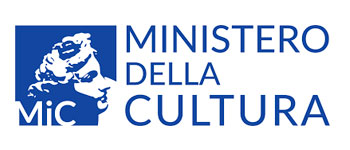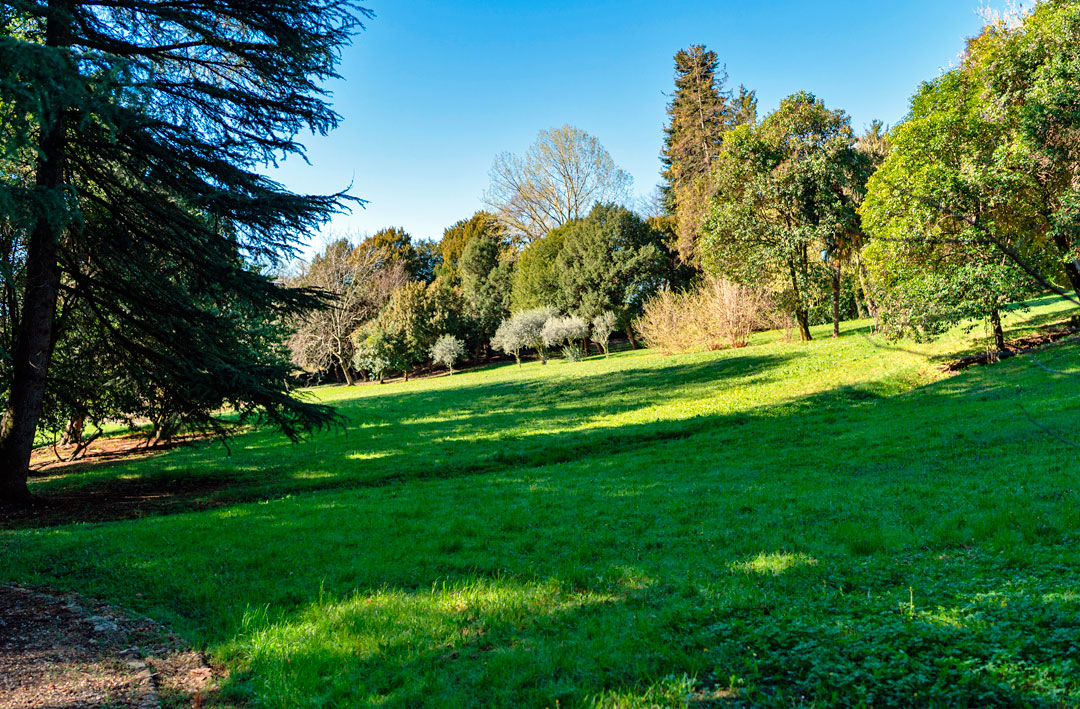
The Centuries-Old Park
Villa Godi Malinverni - Lugo di Vicenza
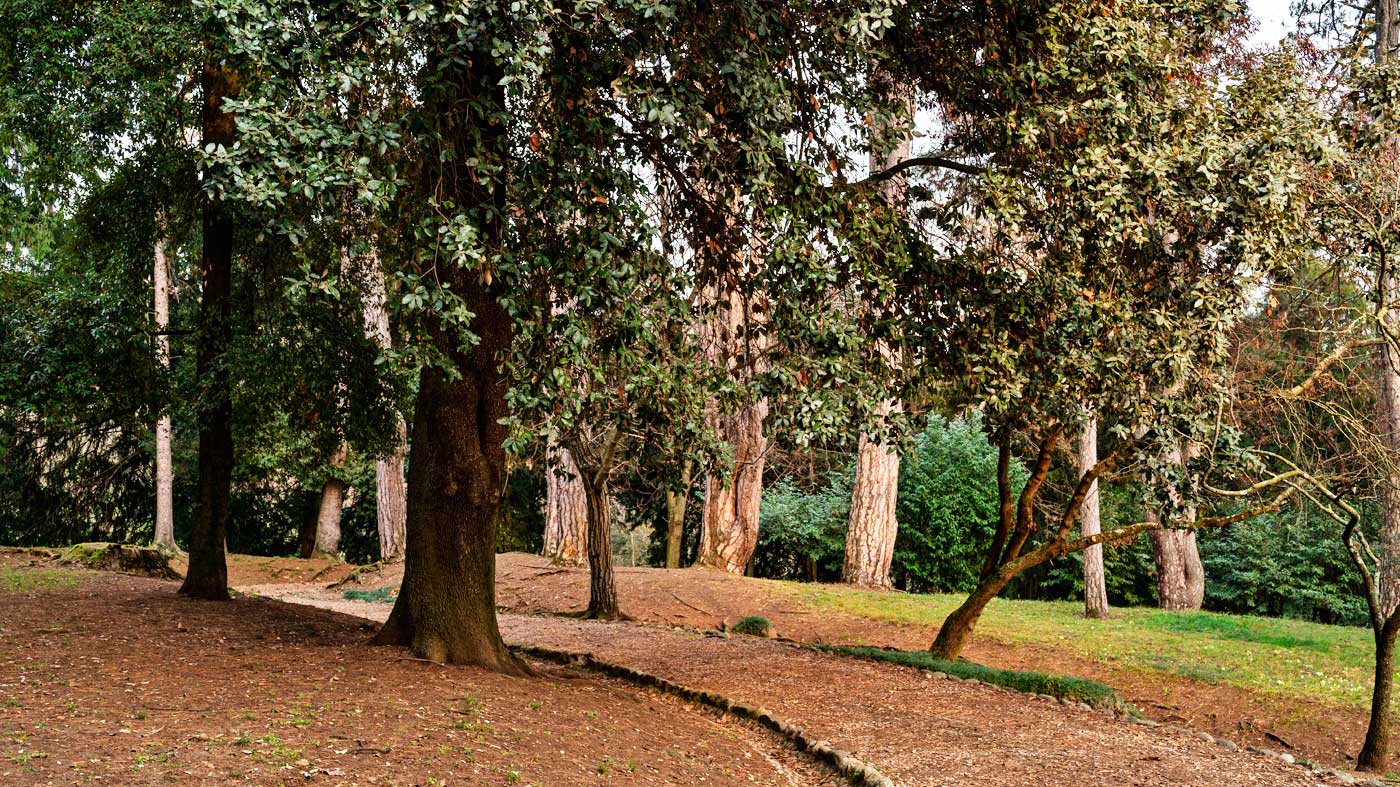
The villa boasts an extraordinary historical park of vast dimensions, extending approximately 7 hectares to the rear of the villa, in harmony with the rear gardens. The park, with its centuries-old trees and 2,600 meters of pathways, was designed in 1852. The historic park we walk through and admire today is merely the latest version of a natural space that has changed appearance and function over the centuries.
Originally, it was the brolo of the villa. In the 19th century, the park was created to replace the brolo. It was likely designed by the architect and fervent patriot Antonio Caregaro Negrin, commissioned by Count Andrea Piovene, the same owner responsible for the creation of the Fossil Museum.
In recent years, the romantic park has become a destination and backdrop for numerous cultural events. It hosts walks and guided tours, as well as activities for schools and celebrations for public and private ceremonies.
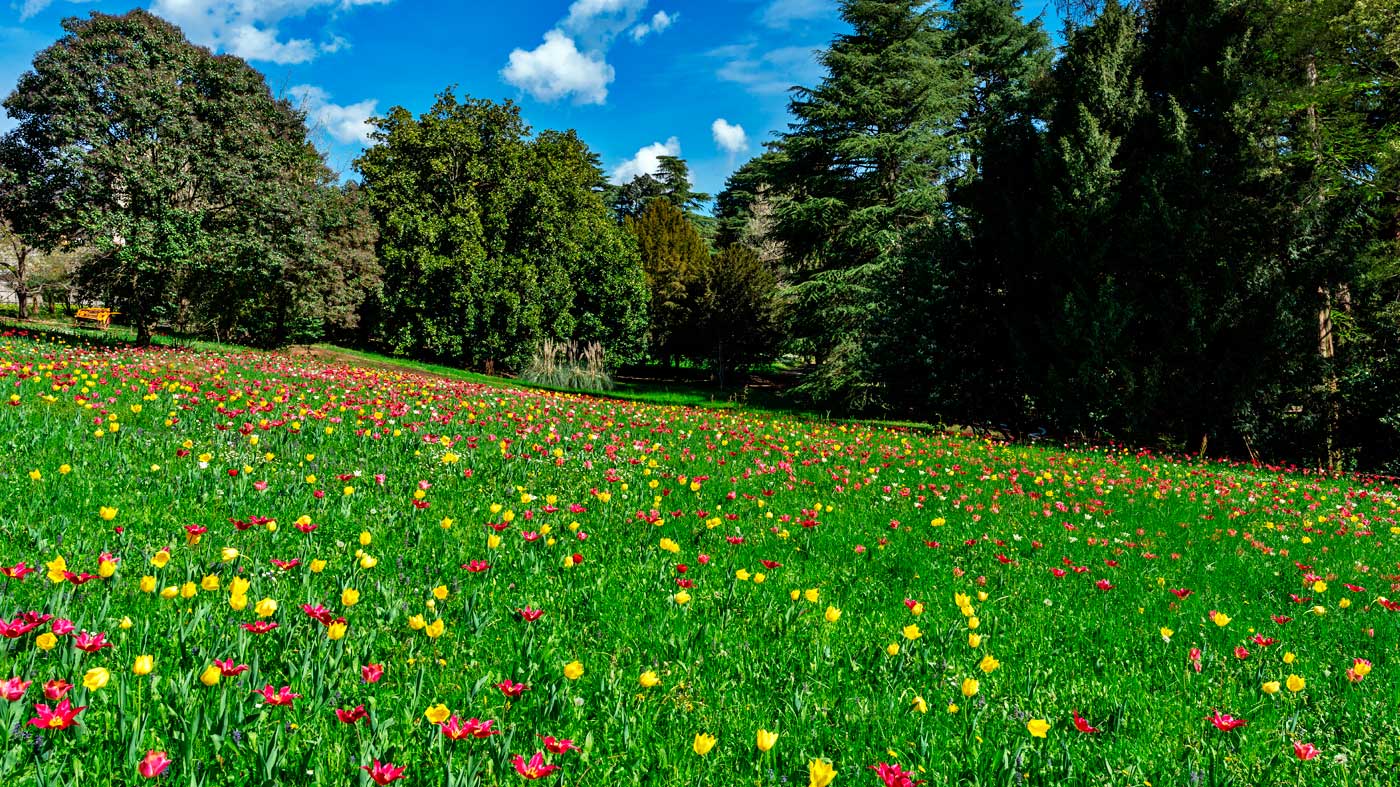
Today, the park is an oasis of peace immersed in the green of the foothill hills, ideal for an afternoon of tranquility.
The park encompasses a vast area in which numerous centuries-old trees tower. There are also long shaded avenues, once traversed by the carriages of guests, perfect for pleasant walks in the beautiful season. The park contains approximately 1,400 trees, including larch pines, yews, cedars, magnolias, ginkgo biloba, and taxodiums.
It is dotted with flower-filled corners, totaling 80,000 flowers planted among collections of roses, peonies, irises, tulips, daffodils, hyacinths, anemones, and crocuses, allowing visitors to enjoy seasonal blooms at various times of the year.
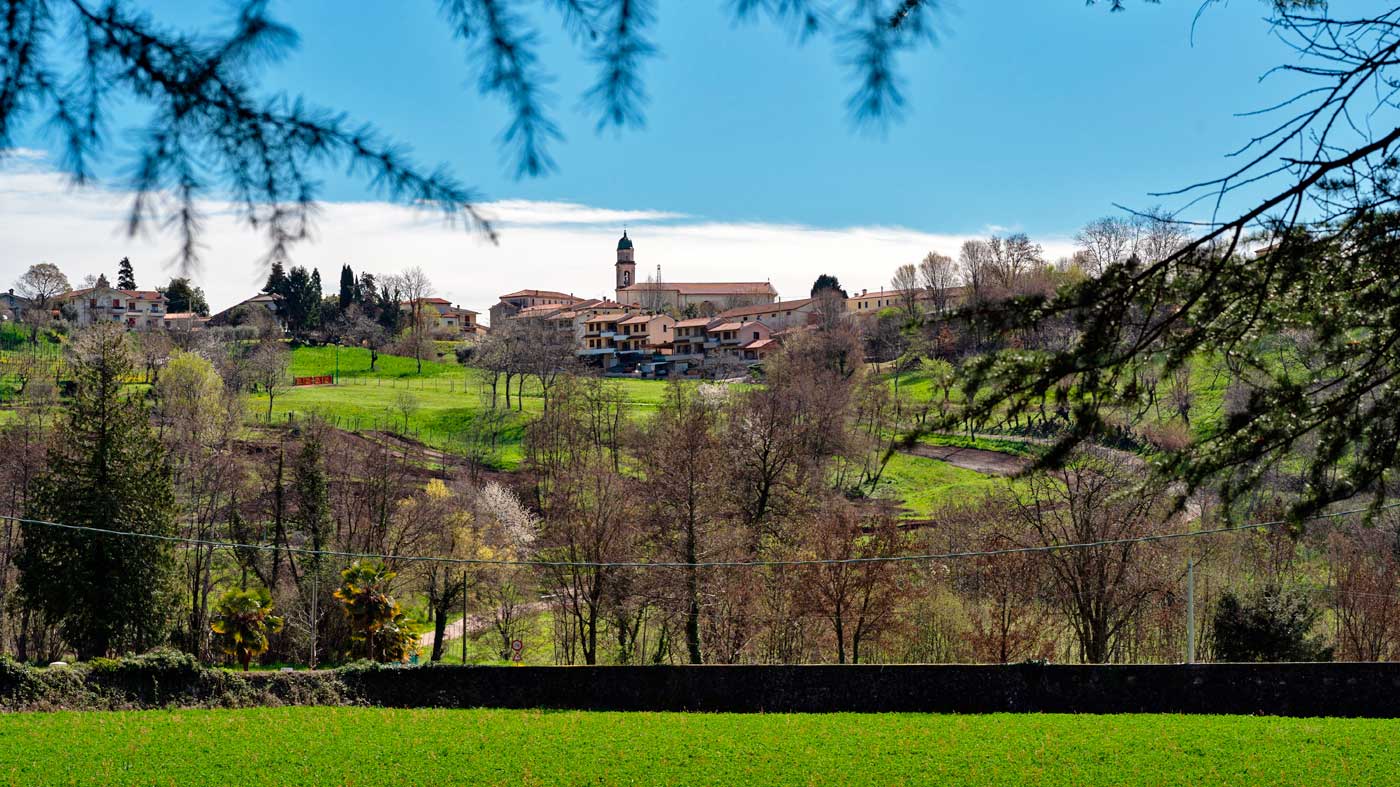
As is typical of the Romantic tradition, the park is dotted with corners designed to amaze and surprise the visitor, alternating breathtaking natural elements with stunning artificial features.
The arrangement of the plants in the park is carefully planned down to the smallest details to create these effects. The plants are placed according to a precise design to stand out as color spots in the landscape.
The park at Villa Godi Malinverni evokes a lush nature that invites peace and reflection, alongside artificial spaces specifically created to astonish us. Within the park, visitors can explore the "Corner of Silence" with its romantic pond; the "Corner of Memories" with the 19th-century epitaphs of the Piovene family and the tomb of Remo Malinverni; the "Corner of Magnolias," and the avenue of cedars leading to the Palladian entrance gate (Porta Rustica).
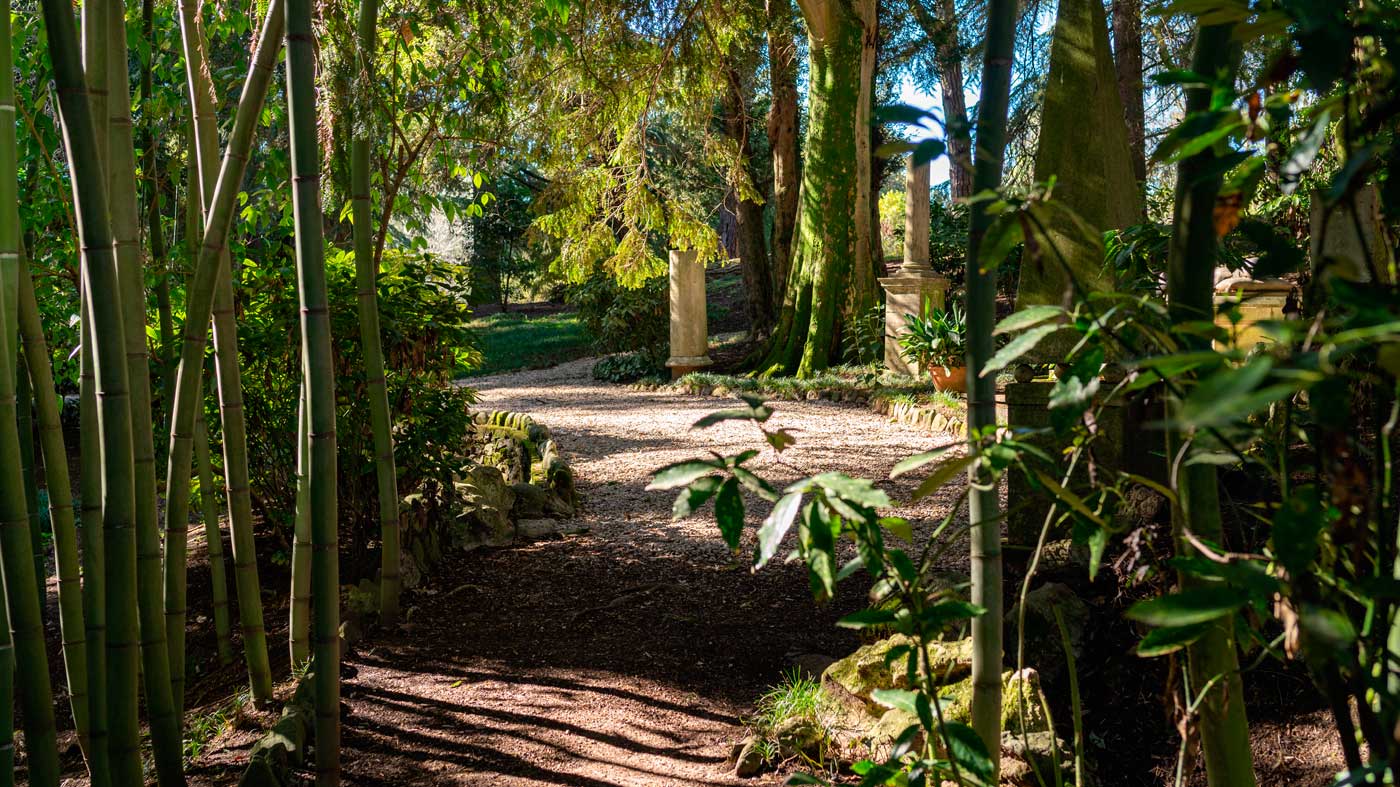
It was a common practice in villa parks to dedicate an area of the natural reserve to the memory of those who had lived on the property. The most important and significant figures were commemorated with statues and stone stele inscribed with poetic verses, texts, or dedications. Villa Godi Malinverni is no exception. Here, too, the park features a corner dedicated to memories. In this area of the park, tombs and epitaphs are placed to honor some of the individuals who spent part of their lives at the villa.
The small Corner of Memories has at its center, in a prominent position, the stone tomb of Remo Malinverni, topped with the bronze statue of the Milanese professor. The statue is the work of sculptor Silverio Montaguti. Other epitaphs are dedicated to the family of Piovene (who owned the villa for much of the 19th century), including Andrea Piovene himself, the commissioner of the park.
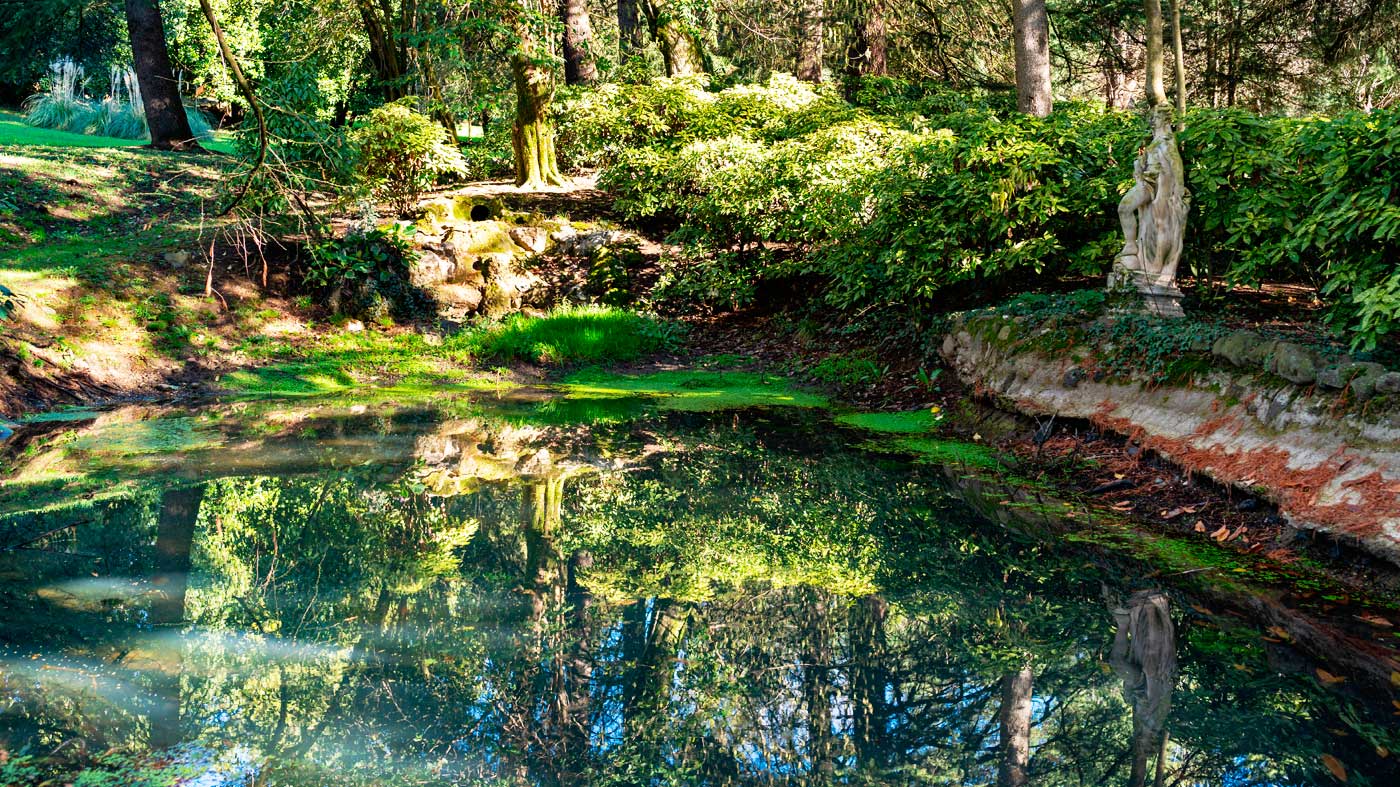
A fundamental requirement for contemplation is silence. "The Corner of Silence" is the name given to the heart of the park, the quintessential secluded and tranquil place where one can dream about the past and enjoy a moment of rest. This corner is accompanied by a small body of water immersed in greenery, surrounded by taxodium trees and an ancient Ginkgo Biloba. A hedge encircles and partially conceals a small romantic pond. This secluded spot has been a source of inspiration for the most sensitive souls who frequented the villa. Among them, Antonio Fogazzaro and the abbot Giacomo Zanella, author of the famous poem "Sopra una conchiglia fossile" ("On a Fossil Shell"), should be mentioned.
"On the closed notebook of famous prophets, from the distant maternal moss, rests, marble rest, of waves once daughters, twisted shell. Hidden in the depths of a marine cave, you saw the morning of the young world; you wandered with the nautilus, with the mollusks in flocks, and man was not. Through countless turns of slow seasons, the arcane legend of immense struggles imprinted on your volatile back, the course of the ages!"
In the romantic pond, it is now possible to see some species of aquatic turtles, further enriching this magical place, making it perfect for a family visit.
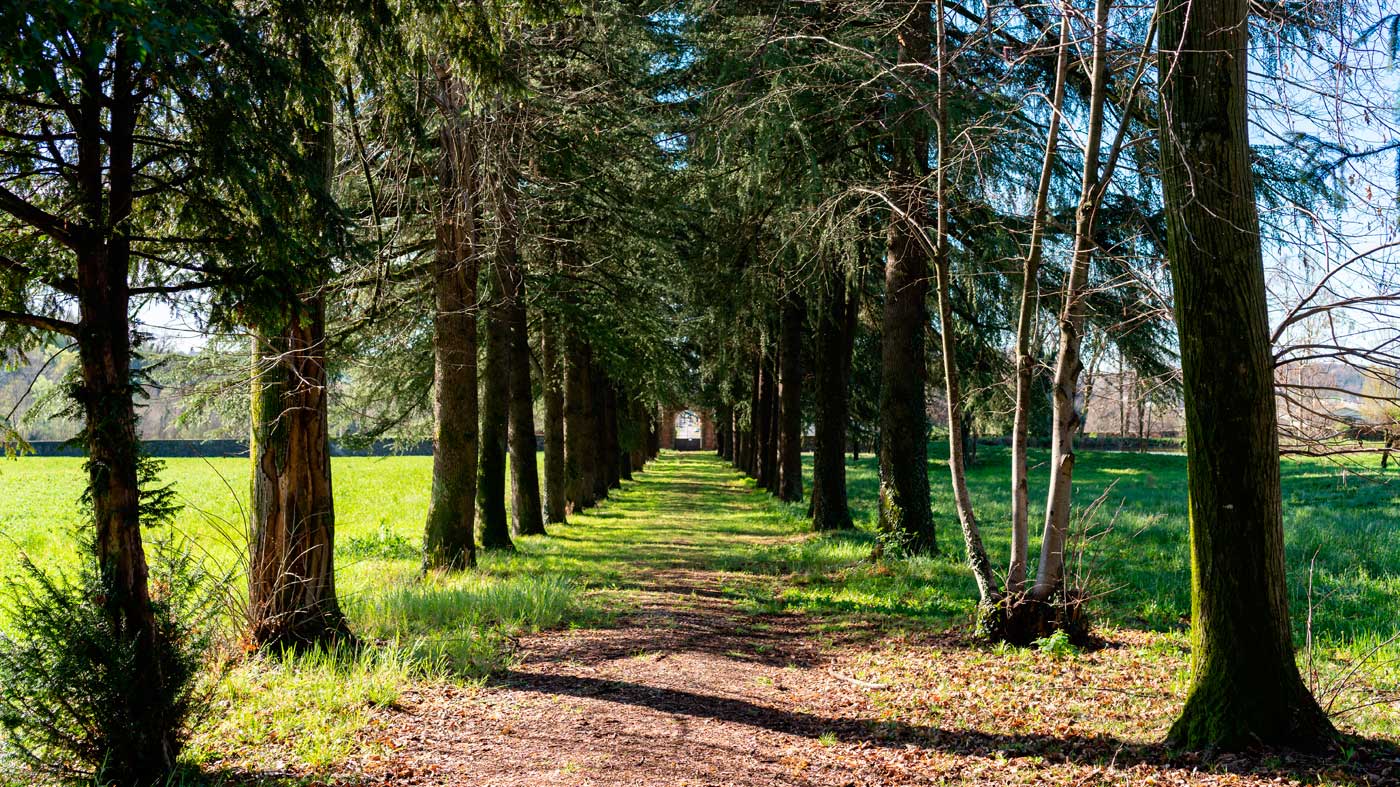
The rusticated portal that grants access to the park faces the current main road coming from the town of Fara Vicentino. Known locally as "Porta Rustica," this gate originates from Palladio. In the 16th century, it primarily provided access to the brolo, a large area dedicated to the orchard and agricultural production. An internal side road, running along the walls, led to the carriage house.
The portal bears an inscription on the lintel in Latin: "Ingredere et laetaberis," meaning "enter and rejoice," which since Palladian times has anticipated the wonders of the place. From the 19th century, with the transformation of the brolo into a romantic park, the portal became the main entrance to both the park and the villa itself.
The magnificent avenue of cedars evokes the carriage path. Alongside the avenue extends a large pond, originally used as a fishpond, now revitalized. Carp have been reintroduced into the pond, restoring the area to its former ambiance
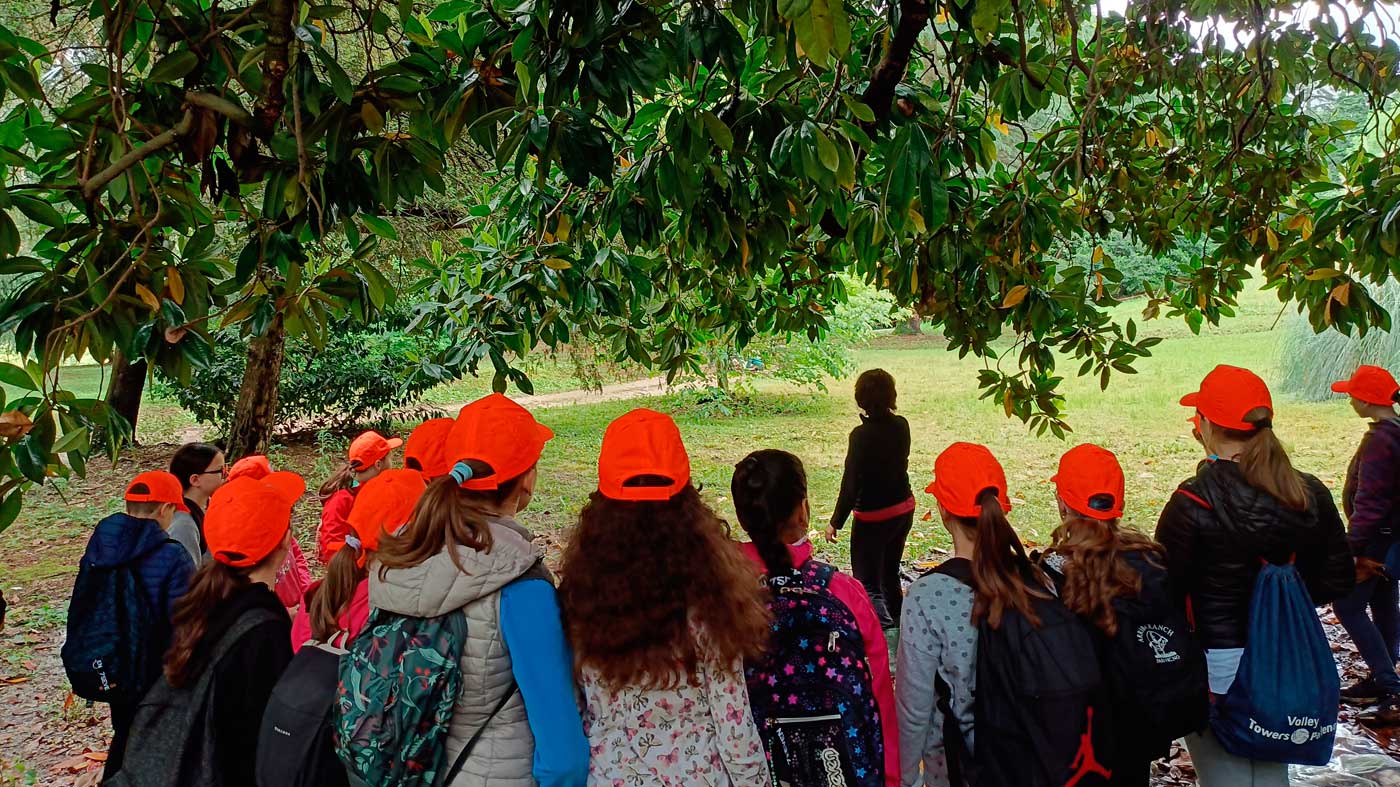
In front of the Museums, it is now possible to walk through the educational orchard, a space restored thanks to the latest restoration work, immersing visitors in the reconstruction of a true 16th-century brolo!
Inside the orchard, visitors can walk among plants typical of the region, including ancient varieties that date back to Palladio's time. One can admire apple trees, pear trees, and cherry trees of local cultivars, as well as plants suited for bird hunting, such as dogwoods, hawthorns, and hornbeams. The orchard also features several grapevine varieties, both in their classic form and in the "married vine" style typical of Venetian territories during the Renaissance, along with traces of the typical "roccolo" (bird trap).
Within the orchard, there is also an apiary containing 12 hives, home to 900,000 bees, in collaboration with Apicoltura Valdastico of Lugo di Vicenza. The bees help enhance the park's resilience by ensuring the pollination of the flowers and contributing to the strengthening of biodiversity.
The orchard is an ideal space for specialized groups and school visits, offering an opportunity to immerse in an ancient rural atmosphere, while also discussing sustainable agriculture. The species planted here are typical of the local ecosystem, naturally adapted to the area's climate and resistant to plant diseases, requiring minimal phytosanitary treatments due to their pronounced resilience.
Discover in detail Villa Godi Malinveri, the Palladian Gardens and the Centuries-Old Park.
Click the button to view the map
PARK MAP

